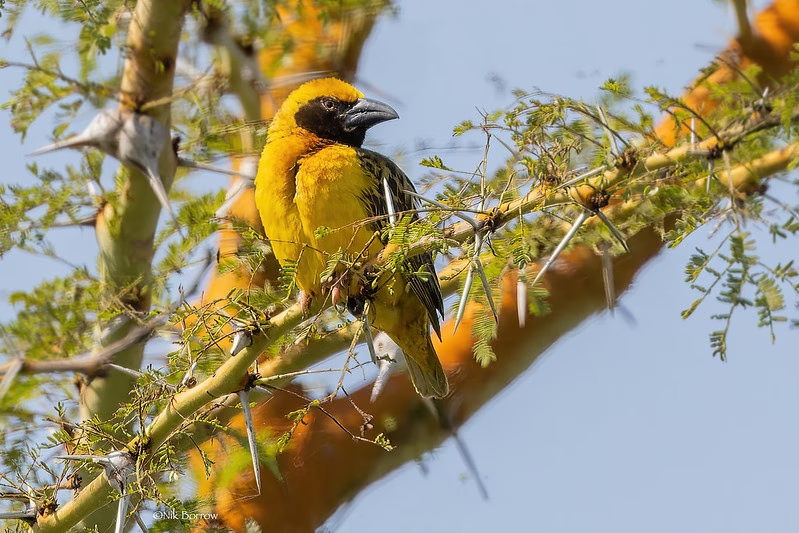The ideal time to visit Lake Bisina for bird watching and How to Get There.
 The ideal time to visit Lake Bisina, Lake Bisina is a serene Ramsar-listed wetland in eastern Uganda famous for birding and one of the most rewarding destinations for nature enthusiasts.
The ideal time to visit Lake Bisina, Lake Bisina is a serene Ramsar-listed wetland in eastern Uganda famous for birding and one of the most rewarding destinations for nature enthusiasts.
With its tranquil environment and rich biodiversity, the lake offers a fantastic opportunity to spot rare bird species, including the elusive Fox’s Weaver, which is Uganda’s only endemic bird.
Planning your visit at the right time and knowing how to get there is key to maximizing your experience at the lake.
The ideal time to go birding at Lake Bisina and How to Get There.
Birding activity at Lake Bisina is influenced by seasonal changes, particularly rainfall and breeding cycles. To ensure a successful birding trip for more experience, consider these seasonal recommendations.
-
Dry Seasons (June to August and December to February).
The dry seasons are the best time for bird-watching at Lake Bisina. During these months, the vegetation is less dense, making it easier to spot birds in the open view.
The water levels stabilize during this period, attracting birds to the lake’s edge and marshes. The trails are also accessible during these times.
Key species to see.
-
- Fox’s Weaver: More visible during this time as it nests in the papyrus swamps.
- Shoebill Stork: Prefers stable waters for feeding and is easier to spot near the papyrus edges.
- Other water birds like African Jacanas, Malachite Kingfishers, and herons are commonly seen.
-
Rainy Seasons (March to May and September to November)
- Why is it challenging?
- Heavy rains can make trails muddy and water levels unpredictable, scattering birds across a wider area.
- Why it’s still worth it.
- Migratory birds arrive during these months, adding diversity to your sightings.
- Breeding activity peaks for some species, offering unique opportunities to observe courtship displays and nesting behaviors.
- Key Species.
- Migrants like Eurasian bee-eaters and various warblers.
- Local species involved in courtship, like the Papyrus Gonolek.
Bird watching Tip.
Early mornings and late afternoons are the best times of day to see the birds.
These periods coincide with feeding times, making birds more active and visible.
How to Get to Lake Bisina.
Reaching Lake Bisina involves a journey into Uganda’s eastern region, where stunning landscapes and vibrant communities await.
Here’s a step-by-step guide to get you there.
From Kampala to Soroti.
The journey through this route is about 300 km, taking 6 hours’ drive. Taking the Kampala-Jinja highway eastward, passing through Jinja.
Continue via the Tororo-Mbale Road to Mbale, a bustling town near Mount Elgon.
From Mbale.
Heading northwest on the Mbale-Soroti Road to Soroti town.
From Soroti to Lake Bisina
Travel south towards Katakwi District, following local roads that lead to the lake, taking about 50 km in just 1-2 hours.
Via small villages like Kapiri, the lake can still be accessible.
Hiring a 4WD vehicle is highly recommended, especially during the rainy season when roads can be challenging.
Motorbike taxis (boda-bodas) are an option for the adventurous, though less comfortable.
Tips for Planning Your Journey-The ideal time to visit Lake Bisina
Hire a guide.
Local guides can assist with navigation and ensure you find the best birding spots. They are also knowledgeable about the area’s flora, fauna, and cultural highlights.
Prepare for Remote Conditions.
The area around Lake Bisina is remote, with limited infrastructure. Carry essential supplies, including water, snacks, and a first-aid kit.
Accommodation Options.
While there are no major lodges on the lake itself, you can find comfortable accommodation in Soroti town or Mbale.
Some birders also camp near the lake for a more immersive experience.
Respect local customs.
The communities around Lake Bisina are welcoming and deeply connected to the lake. Interacting with locals respectfully can add a cultural dimension to your visit.

